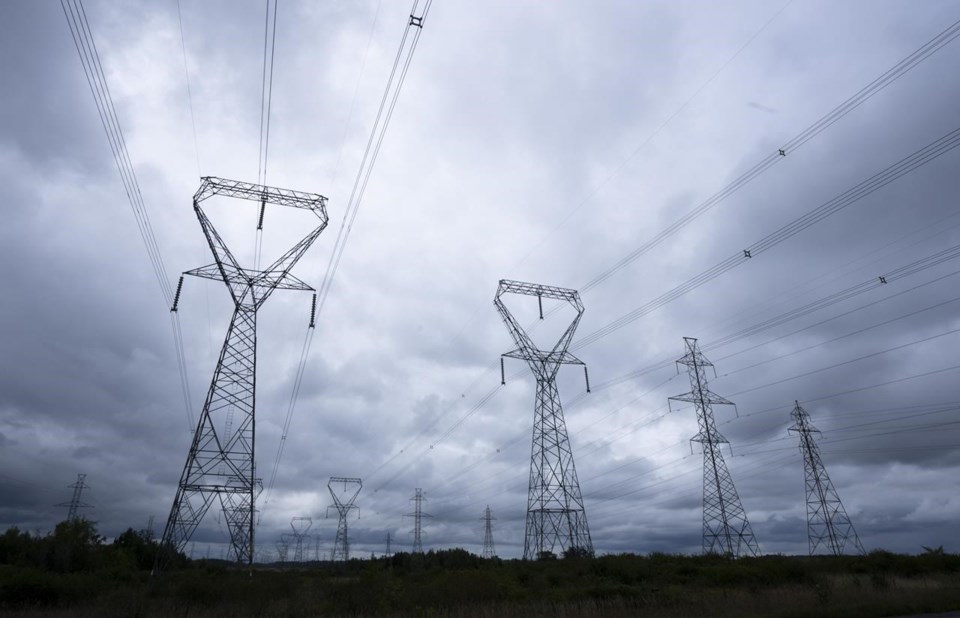TORONTO — Ontario's electricity system operator has secured new power supply from 10 battery storage facilities and three natural gas and biogas facilities, which should meet the province's needs until the 2030s.
The Independent Electricity System Operator had said Ontario should secure 4,000 more megawatts of capacity in the system — enough to power the city of Toronto — as it faces surging electricity demand.
Energy Minister Todd Smith said new projects across the province such as three electric vehicle battery plants highlight the need to secure a steady supply of electricity.
"We have now broken records once again by completing the largest battery storage procurement in Canadian history and securing the electricity generation we need to power the next major international investment, the new homes we are building and industries as they grow and electrify," he wrote in a statement.
Combined with a previous round of securing new generation, the IESO said Thursday's announcement means the province will have enough electricity for the rest of this decade.
The new 20-year contracts are for electricity supply set to come online between 2026 and 2028.Â
They include 1,784 megawatts of battery storage projects, which can charge during off-peak hours and inject energy back into the grid when it's needed, including a 390-megawatt battery storage system in eastern Ontario that the government says is expected to be the largest storage facility procured in Canadian history.
The new electricity supply will also, controversially, come from another 411 megawatts of natural gas and on-farm biogas generation.
The electricity operator has said the amount of new natural gas Ontario needs in the next few years is expected to increase greenhouse-gas emissions by two to four per cent, but that it is needed for now to ensure reliability of the grid.
In 2021, Ontario's electricity system was 94 per cent emissions free, but that is now down to 87 per cent.Â
Green Party Leader Mike Schreiner said new contracts for polluting natural gas production make "absolutely no sense" when lower-cost wind and solar energy is available.
"It's good that the government is finally starting to play catch up in investing in battery storage so we can better utilize low-cost renewables," he said.
"But here's the bottom line: global investors are pouring hundreds of billions of dollars into wind and solar, because they're the lowest cost sources of generation. They're not putting money into expensive fossil gas plants like the Ford government is."
The IESO has said Ontario could fully eliminate natural gas generation in its electricity system by 2050, starting with a moratorium in 2027 then phasing out current production, but while the energy minister has spoken positively about the prospect, he has not committed to it.
However, the government has said its next planned procurements are all for non-emitting sources of generation, including wind and solar power.
This report by The Canadian Press was first published May 9, 2024.
Allison Jones, The Canadian Press




